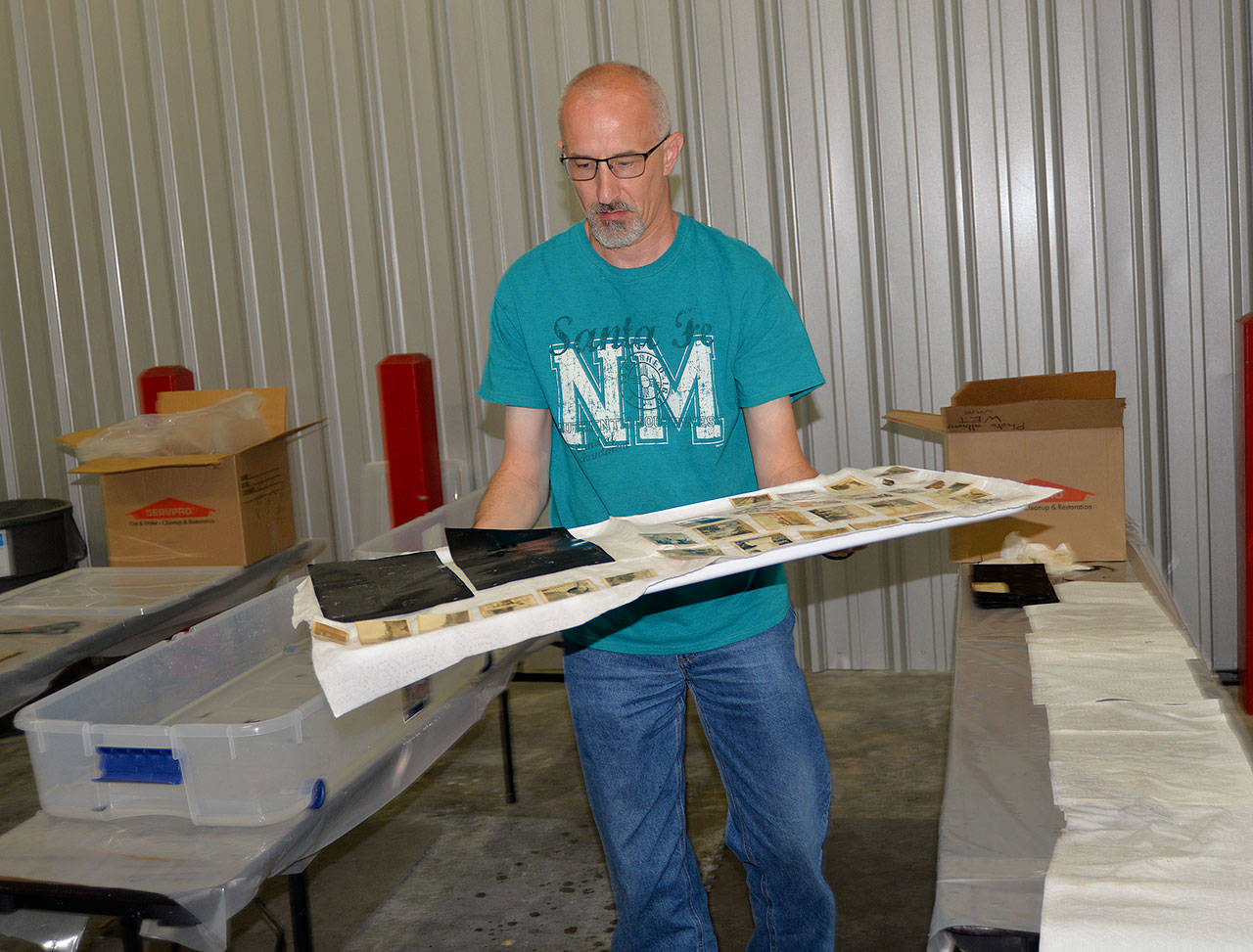On a hot morning this week in the spacious Washington State Archives warehouse in Tumwater, Mark Vessey is carefully handling and repairing a collection of historic photos rescued from the fire at the Aberdeen Museum of History.
Because they were soaked when firefighters poured a small river of water on the old Armory building and then partially dried, the photos have become stuck to each other. They’re not that big, just several inches in length, and show a variety of black and white portraits, households and nature shots.
Vessey then dips them into a plastic tub of filtered water, allowing him to peel the photos apart without tearing them.
“You need the water to help loosen it up and peel it back,” says Vessey, an Aberdeen native who now works for the State Archives and volunteered to clean photos. “If you just peel it back, there’s a chance it pulls the emulsion off and totally separates it. Getting it wet helps, but you can still see the soot damage.”
Some of the photos have small dirt or soot marks, and Vessey can use his fingers to gently wipe them off.
Vessey attended Aberdeen High School and left the area in 1989. “This is all familiar to me, all the history of the Harbor, I still have family down there,” he said. “So many valuable items were destroyed. Hopefully, we can bring some things back.”
After he finishes laying the photos onto a paper towel-covered tray, Vessey carries the trays down an aisle of tall racks where they will dry.
The racks are similar in size to those in a large hardware store, and are covered in numerous photos and documents that are either drying or waiting to be packed into boxes.
There are all kinds of photos, ranging from shots of logging operations, to a portrait of Aberdeen founder Sam Benn, and some obscure things like snapshots of someone’s personal trip to Alaska.
On Tuesday last week, Washington State Archivist Steve Excell, about five other state archivists and a team of workers from ServPro, a company that specializes in restoration after disasters, spent hours recovering and boxing up the historical documents and photos from the basement of the Armory. The basement was flooded during the fire, and a lot of the documents received water damage but were not burned.
Excell “conservatively guessed” that 98 or 99 percent of what his team took from the archives would be saved.
However, many of the photos have warped edges, and those that were wet and received soot damage could be permanently stained. The items with mold damage are put into freezers, and treated separately.
On most of these photos, there’s little or no text detailing what year they were taken or who is in them, just a long code to identify where the documents were filed.
These filing codes and the matching photos’ information were digitized on the museum’s computer, but it’s unknown if that hard drive survived the fire. Until the fire investigation is completed, there’s no way to recover it.
Other notable photos at the warehouses include one from 1908 with seven bear cubs held on leashes by Grays Harbor clothier George J. Wolff and others. The story was that when Theodore Roosevelt sent a naval fleet to visit Grays Harbor, the cubs were rounded up and presented as gifts to live on the ships as mascots.
In another section of the aisles are dozens of small glass negatives with images printed on them. These are a little harder to fix, because getting them wet can ruin the image. In some spots on the glass negatives, the picture has been wiped away, leaving a streak of clear glass.
For some archivists working there, it has been enjoyable to see the improvements some of the photos have made from their damaged state.
“It’s nice, because when I saw some of this stuff come in, it looked really bad,” said state archivist Maggie Cogswell. “I was expecting it to just be gone, and then I see it dried, and I just said, ‘Wow! It’s going to be OK.’”
Excell guessed that his team will be finishing work on the documents in the next day or two. After that, the boxes will be held at the State Archives until the City of Aberdeen decides where it wants to store them.



